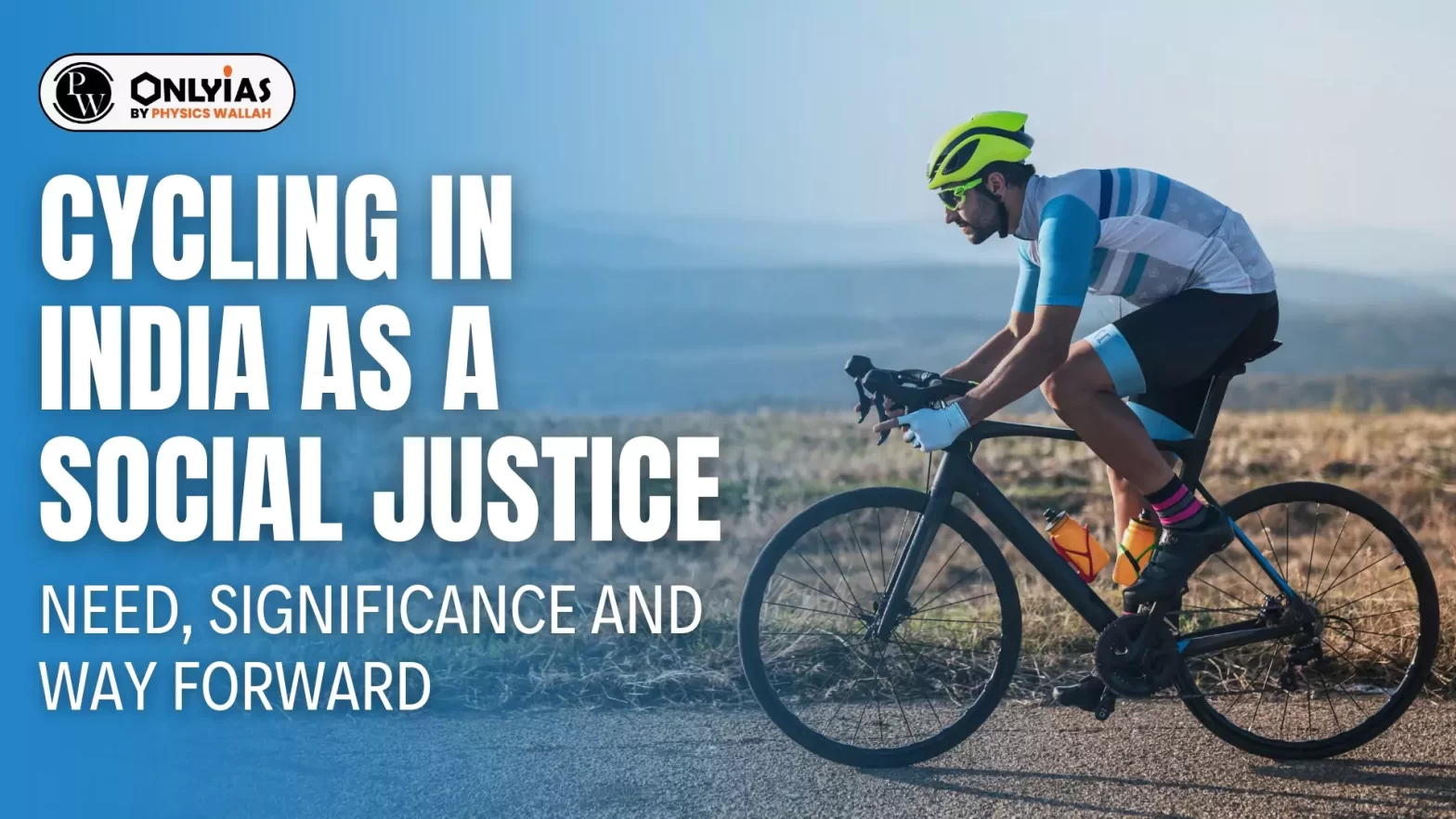![]() 27 Mar 2024
27 Mar 2024

This article focuses on the significance and need of cycling in India that should not just be considered as decarbonising transport but a matter of social justice with a transformative impact on people’s lives.
| Relevancy for Prelims: Salient Features Of Indian Society, Analyzing Social Justice, Statue Of Social Justice, and Road Accidents In India-2022′ Report Released By MoRTH.
Relevancy for Mains: Cycling in India as a Social Justice- Need, Significance and Way Forward. |
|---|
| Mains Question: Vehicle parking problem in India presents a multifaceted challenge that affects urban planning, traffic management, and the quality of life in cities. Comment (10 marks, 150 words) |
|---|
| Must Read | |
| NCERT Notes For UPSC | UPSC Daily Current Affairs |
| UPSC Blogs | UPSC Daily Editorials |
| Daily Current Affairs Quiz | Daily Main Answer Writing |
| UPSC Mains Previous Year Papers | UPSC Test Series 2024 |

<div class="new-fform">
</div>